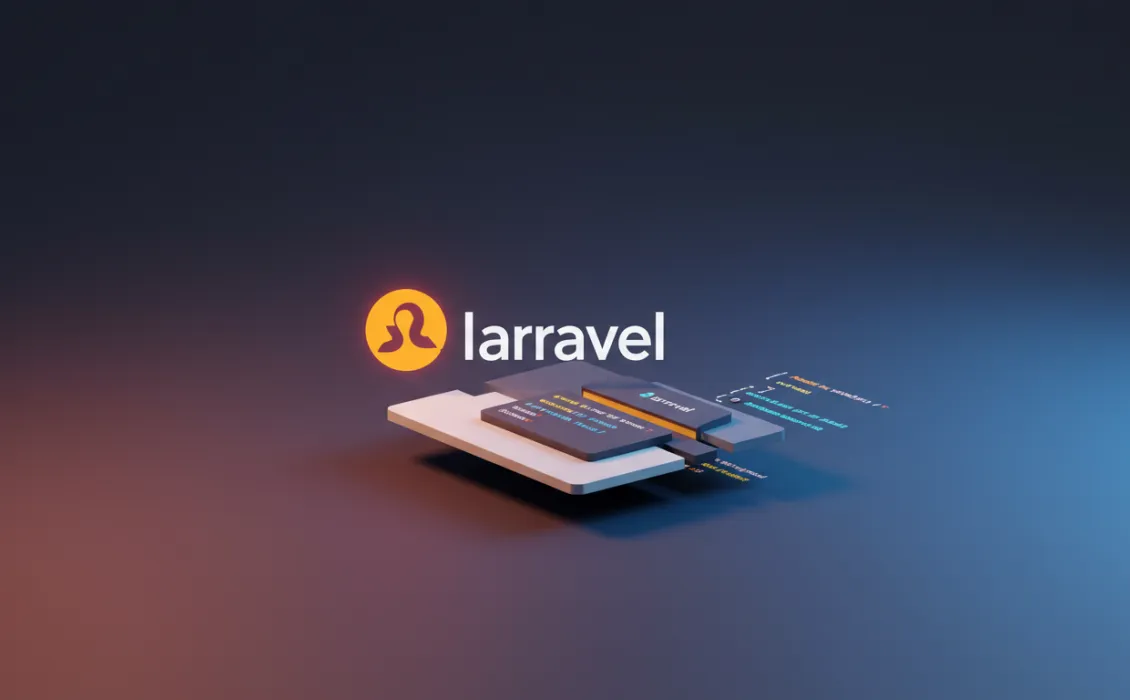Introduction
In modern Laravel projects, developers are often nudged toward using JavaScript-heavy UI frameworks like Vue, React, Inertia.js, or Livewire. While these tools are useful, they often come with a high cognitive and technical overhead — especially when your goal is simple: submit data, get a response, and update part of your UI.
But let me share something from my own development journey.
Back when I used to work with CodeIgniter, I followed an approach that was surprisingly efficient: I would return HTML partials from backend APIs, and on the frontend, I used jQuery to inject these partials into the DOM. This meant forms would return with updated values and validation errors pre-rendered, just as you’d expect in a traditional multi-page app. No JSON parsing. No manual DOM patching. It just worked — and it worked really well.
At that time, this method was largely overlooked because the trend was moving toward SPAs and JSON APIs. But today, in what I call Web Transition 4, this pattern is making a strong comeback. We are seeing a shift back to server-driven UI rendering, where HTML is once again the main response format, and JavaScript acts as a facilitator — not the core renderer.
This article walks you through how to apply this exact pattern in modern Laravel: returning Blade partials from your controllers and using just a bit of JavaScript (not a full framework) to inject them into the DOM.
This approach is simple, elegant, and leverages Laravel’s strengths — without the overhead of managing frontend state manually.
The Problem with JSON-Centric UIs
Consider a basic flow:
- You click a button or submit a form.
- Frontend sends a fetch/axios call to a Laravel API endpoint.
- Laravel processes the request and returns JSON.
- Frontend parses the JSON.
- Developer writes DOM manipulation code to reflect the new state.
- Developer manually handles errors (like validation messages).
If you’re thinking, “That’s a lot of work for a simple interaction,” you’re right.
It gets worse when:
- You have complex Blade conditions tied to authentication or roles.
- You rely on session state (which APIs can’t access).
- You end up duplicating rendering logic across PHP (for SSR) and JavaScript (for interactivity).
So what’s the alternative?
The Blade Partial API Pattern
Instead of JSON, your Laravel controller returns Blade-rendered HTML as the response. Then, you simply replace part of your page with this HTML using JavaScript.
Here’s how it works:
Laravel Route
// web.php
Route::get('/products', [App\Http\Controllers\ProductController::class , 'index']);
Blade Partial
<div class="px-4 pb-4 flex flex-col items-center justify-start border-gray-200 dark:bg-gray-800 dark:border-gray-700">
<table class="min-w-full divide-y divide-gray-200 table-fixed dark:divide-gray-600">
<thead class="bg-gray-100 dark:bg-gray-700">
<tr>
<th scope="col" class="p-4 text-xs text-center font-medium text-gray-500 uppercase dark:text-gray-400 w-2/5">
Title</th>
<th class="p-4 text-xs font-medium text-center text-gray-500 uppercase dark:text-gray-400 whitespace-nowrap ">
Category</th>
<th scope="col" class="p-4 text-xs text-center font-medium text-gray-500 uppercase dark:text-gray-400">
Actions</th>
</tr>
</thead>
<tbody class="bg-white divide-y divide-gray-200 dark:bg-gray-800 dark:divide-gray-700">
@if (isset($products) && count($products) > 0)
@foreach ($products as $product)
<tr class="hover:bg-gray-100 dark:hover:bg-gray-700">
<td class="p-4 text-sm font-normal text-gray-500 dark:text-gray-400">
{{ $product->title }}
</td>
<td class="p-4 text-sm font-normal text-gray-500 dark:text-gray-400">
{{ $product->category->name ?? 'Uncategorized' }}
</td>
<td class="p-4 space-x-2 whitespace-nowrap text-center">
<a href="{{ route('', [ 'products' => $id]) }}" title="Update">
Edit
</a>
<button type="button">
Delete
</button>
</td>
</tr>
@endforeach
@else
@include('partials.norecord')
@endif
</tbody>
</table>
{{ $products->links('partials.paginator', ['data' => $products->toArray()]) }}
</div>
Controller
class ProductController extends Controller
{
public function index(Request $request)
{
$products = GetProducts::handle();
return view('products.index',['products' => $products]);
}
}
This will generate html content with all blade power and pagnation rendered.
JavaScript
async function getProducts() {
const response = await fetch('/products', {
method: 'GET',
headers: {
'X-CSRF-TOKEN': document.querySelector('meta[name="csrf-token"]').getAttribute('content'),
}
});
const html = await response.text();
document.querySelector('#products').innerHTML = html;
}
And finally pre-loaded html.
<div id="products"></div>
Just like that, you’ve updated a part of your page without writing any JS templating logic.
Why This Works So Well in Laravel
Automatic Validation Rendering
Imagine you submit a form and Laravel validation fails:
$request->validate([
'name' => 'required|min:3'
]);
If you’re returning a Blade partial that includes @error blocks, Laravel will render them as-is, no manual mapping or frontend logic required.
<div class="col-span-6 sm:col-span-3">
<label for="name"
class="block mb-2 text-sm font-medium text-gray-900 dark:text-white">Name</label>
<input form="user-form" type="text" name="name" id="name" required
value="{{ old('name', $user->name) }}"
/>
@error('name')
<p class="mt-2 text-sm text-red-600 dark:text-red-500">
<span class="font-medium">{{ $message }}</span>
</p>
@enderror
</div>
And here is the result.

Auth & Role Checks Just Work
This is a game-changer.
Recently, while working on a role management system, I had to show or hide certain buttons based on user roles:
@can('edit_users')
<button>Edit</button>
@endcan
This logic worked fine on normal pages. But when I moved this to an API route (routes/api.php) and called it via fetch, suddenly the buttons stopped showing up — even for admins.
Why?
Because API routes are stateless by default. They don’t use the session guard. When Laravel renders the view, there’s no authenticated user, and the role check fails.
I spent hours debugging this, only to realize that moving the same logic to a web route fixed it instantly.
With this Blade approach:
- Authenticated sessions work
- Middleware applies normally
- Role-based rendering behaves exactly as expected
Security Considerations
When returning Blade partials from Laravel, you still have all the same middleware power as regular routes:
- Use
authmiddleware for access control. - Use
@can,@auth, and other Blade directives for rendering logic. - CSRF protection works out of the box (as long as you include the token in your fetch headers).
Example:
Route::middleware('auth')->post('/dashboard-widgets', function () {
return view('partials.widgets', [...]);
});
When Is This Approach Better Than Livewire or Inertia?
This method doesn’t replace every use case. But it shines when:
- Your app is mostly server-rendered.
- You only need light interactivity (forms, filters, search).
- You want to avoid frontend framework overhead.
- You prefer having one source of truth for your UI: your Blade views.
Pros over Livewire
- No magic or hidden reactivity.
- No Alpine.js dependency.
- Full control over when and how DOM updates happen.
Pros over Inertia
- You don’t need a JS framework (like Vue or React).
- You avoid tightly coupling your frontend to Laravel routes.
- You skip the client-side routing layer altogether.
Final Thoughts
Laravel is a server-side framework. It shines when you let it render views.
By returning HTML instead of JSON from your APIs — and using Blade partials instead of frontend templates — you:
- Simplify your app
- Remove duplicated logic
- Retain Laravel’s full power (auth, roles, validation)
- Reduce frontend dependencies
You don’t need a JavaScript framework to build reactive UIs.
You just need to fetch partials — and let Laravel do the heavy lifting.
Summary
- Stop over-engineering your frontend.
- Return HTML partials from Laravel, not JSON.
- Replace DOM content with simple JavaScript.
- Keep your logic in one place: Blade.
- Enjoy the full power of Laravel (auth, roles, validation) without fighting API statelessness.
If you found this post helpful, consider supporting my work — it means a lot.


